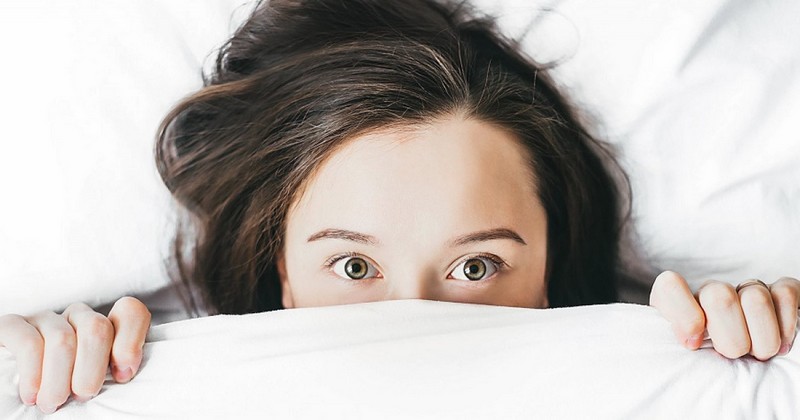Hypnagogic hallucinations: what are they and what can they be a symptom of?

A summary of the characteristics of this type of hallucinations that appear before sleeping.
Hallucinations are all those perceptions that despite not being based on real stimuli, make us see, hear, or even feel by touch. In the case of hypnagogic hallucinations, they occur during the night, and are not directly related to disorders of the brain.and are not directly related to organic disorders.
In the present article we will review the concept of this type of hallucinations, as well as their causes and more relevant characteristics as for their symptoms, which usually appear while we try to fall asleep.
What are hypnagogic hallucinations?
The hypnagogic hallucinations have the peculiarity that occur only during the transitional process from the waking to the sleeping state, specifically in the first and second phase of sleep (REM).specifically in the first and second phases of sleep (REM). This means that they occur when we are trying to fall asleep during the night.
It is frequent that these hallucinations are related to experiences lived by the subject during the previous day, and the most common ones are of auditory and visual character. They can be hallucinations of any type; visual, auditory, gustatory, olfactory, or even tactile..
They usually occur in the young stages of development, when the subject is in infancy and during adolescence. They are less frequent during adulthood, where under natural conditions, they have usually disappeared completely. However, there may be exceptions, in which case they could be considered as indicators of neurotic or neurotic pathologies. indicators of neurotic or psychotic pathologies..
This type of hallucinations are, in many cases, the explanation for the "paranormal experiences" that some people claim to have felt during the night when they were trying to fall asleep.
They should not be confused with hypnopompic hallucinations, which occur during the process of hypnopompic sleep.These hallucinations occur during the transition process between the state of sleep and wakefulness, i.e., they are exactly the opposite of hypnagogic hallucinations.
It could also happen that the subject knows that what he/she is feeling at that moment is not real; in such a case, it would then be a pseudohallucination.
Causes
This kind of hallucinations usually occur in an isolated way in people, depending on the stage of development in which the subject is. As we have already mentioned above, they are common in childhood and adolescenceAt this time, human beings do not yet have fully established logical-rational thinking, and what still prevails is the magical-religious thinking.
During these young stages of life, these hallucinations can be attributed to those fantasies and beliefs may be attributed to those fantasies and beliefs proper to the respective ages (between 6 and 17 years of age). (between 6 and 17 years of age).
In more repetitive cases, when these hallucinations are repeated frequently, they could be caused by some specific sleep disorders. For example, the well-known sleep paralysis.
If it happens that the intensity of hypnagogic hallucinations is more severe, it could be one of the symptoms of narcolepsy (excessive daytime sleepiness). However, this type of hallucination is not considered pathological when it occurs in isolation.
In adult life they may occur once without being considered as an indicator of a disorder. On the other hand, if the prevalence is significant, exactly in cases where they occur over a month for a prolonged period of time, a specialist (neurologist or psychiatrist) should be consulted.
The doctor will be the one who will carry out the necessary tests to detect the possible origin of the hallucinations. Under normal circumstances, these experiences do not last more than twenty seconds, and when the subject wakes up, he/she does not usually remember them.
How to prevent them
The prevention of these hallucinations involves taking into account several factors related to their origin, which means that we must have determined what causes them in order to proceed to prevent them in a specific way for each circumstance.
Let's start with the most common causes: overtiredness caused by not having adequate sleep routines.. When this is the cause, what is recommended is to better distribute the time, the idea is that you can go to sleep at a prudent hour and get a restful sleep of between 6 and eight 8 (in the case of adults).
Anxiety and the consumption of some substances can also generate these nocturnal hallucinations.
Particularly, when the cause is anxiety, relaxation techniques before going to sleep work quite well.. These include specific breathing patterns to lower anxiety levels and help you fall asleep better.
With regard to the consumption of certain substances, prevention involves abandoning such consumption, otherwise hypnagogic hallucinations will persist or may even intensify depending on the substance or if the person goes on to consume some other substance that has a more potent effect on his or her organism.
Finally, when hypnagogic hallucinations are the result of a sleep disorder, then their treatment and prevention are the same as those of the specific disorder the subject is suffering from.
Bibliographical references:
- Germaine, A., Nielsen, T. A. (1997). Distribution of spontaneous hypnagogic images across Hori's EEG stages of sleep onset. Sleep Research. 26: 243.
- Nielsen, T., Germain, A., Ouellet, L. (1995). Atonia-signalled hypnagogic imagery: Comparative EEG mapping of sleep onset transitions, REM sleep, and wakefulness. Sleep Research. 24: 133.
(Updated at Apr 12 / 2024)